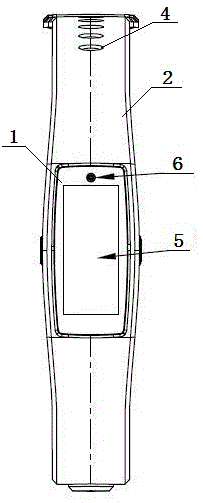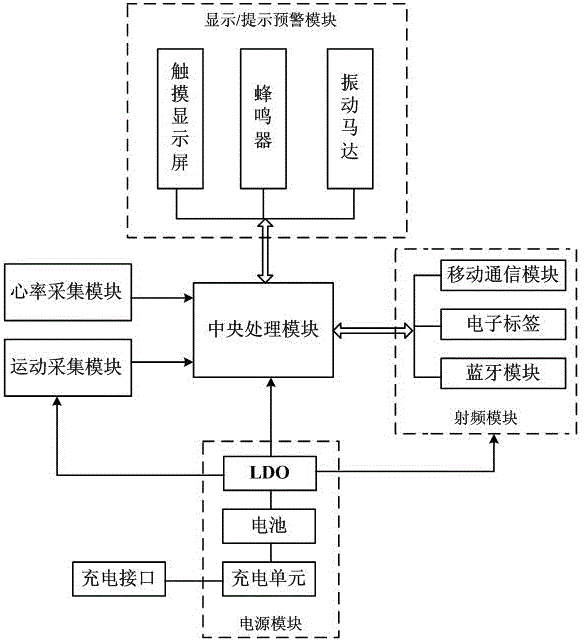Smartband and vehicle control method based on same
A smart wristband and vehicle control technology, applied in the field of smart wristbands to control vehicles, can solve the problems of inconvenient carrying, poor safety, single function, etc., so as to achieve not easy to lose, reduce fatigue driving, and easy to carry Effect
- Summary
- Abstract
- Description
- Claims
- Application Information
AI Technical Summary
Problems solved by technology
Method used
Image
Examples
Embodiment Construction
[0024] The specific implementation manners of the present invention will be further described in detail below in conjunction with the accompanying drawings.
[0025] In view of the problems that the existing electronic remote control key used to control the vehicle has single functions, is inconvenient to carry and is easy to lose, this embodiment proposes a design scheme for controlling the vehicle by using a smart wristband. The function of the electronic remote control key is integrated on the car, so that the user only needs to operate on the smart wristband to complete the control of the vehicle door opening and locking, and can realize the safety of starting and parking the vehicle through the smart wristband. Detection and early warning, to a large extent, solve the problems of vehicle anti-theft and driving safety.
[0026] First combine the following Figure 1-Figure 3 , to describe in detail the hardware composition and working principle of the smart wristband of th...
PUM
 Login to View More
Login to View More Abstract
Description
Claims
Application Information
 Login to View More
Login to View More - R&D
- Intellectual Property
- Life Sciences
- Materials
- Tech Scout
- Unparalleled Data Quality
- Higher Quality Content
- 60% Fewer Hallucinations
Browse by: Latest US Patents, China's latest patents, Technical Efficacy Thesaurus, Application Domain, Technology Topic, Popular Technical Reports.
© 2025 PatSnap. All rights reserved.Legal|Privacy policy|Modern Slavery Act Transparency Statement|Sitemap|About US| Contact US: help@patsnap.com



